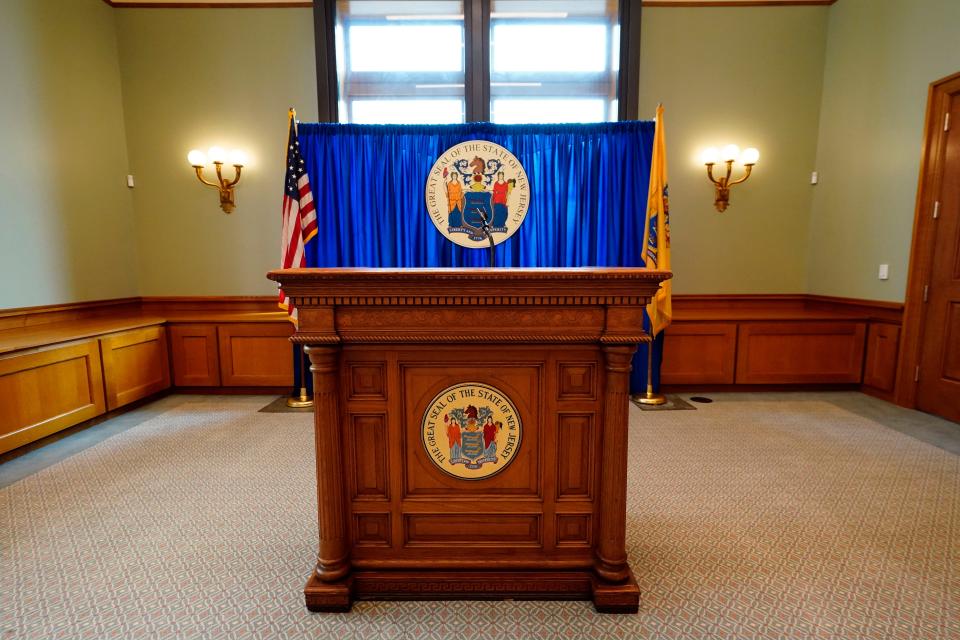With federal COVID funds running dry, New Jersey must get its fiscal house in order
Over the past several years, New Jersey has coasted on a cushion of federal largesse emanating from the COVD pandemic, with the current fiscal year 2024 budget of $54.5 billion boasting a projected surplus of $6.1 billion. By January of this year, just six months after that fiscal blueprint was signed into law, the surplus seems to have disappeared, with Gov. Phil Murphy recommending new tax increases — including a new Corporate Business Tax and a new surcharge for trucks moving goods in and out of New Jersey warehouses — to cover emerging budget gaps.
What happened in that short span to dramatically alter the state’s fiscal future?
The story is a familiar one to New Jersey citizens, the most heavily taxed in the country. As spelled out in a new report prepared for the Garden State Initiative, an independent research and education organization, the state has continued to increase spending at such a rapid rate that it now stands on the brink of a fiscal cliff much sooner than expected. Indeed, at current levels and trends of public expenditures, New Jersey will need to collect at least $5 billion in additional tax revenues by 2028, on top of the 90 to 100 percent growth in many revenue lines over the past several years. Instead of using the federal windfall as many had hoped to strategically pivot and change the kind of fiscal behavior that has made the state among the most unattractive in the nation to operate a business or reside in, officials have continued to kick the fiscal can down the road. If the larger economy slows, or if growth in state tax revenues falters — as we are currently observing — New Jersey’s sizable budget reserve could deteriorate even sooner.

With federal funds expiring, the governor and legislature must face fiscal reality and resolve to drastically change direction. Reinforcing that urgency is the fact over the past decade state spending has increased by 28% on an inflation-adjusted basis, at the same time the population has grown only 3.7% — and actually began shrinking in 2022. Taxes and fees have also increased over the past decade by about 36% on an inflation-adjusted basis, punctuated by a whopping 92% hike in the state’s corporation income tax Just as ominously, in order to meet the projected $5 billion revenue gap by 2028, the GSI report estimates that the income tax on corporations will need to nearly double again, and the state’s sales tax rate will need to increase from 6.625% to nearly 9.1%. Is it any wonder businesses and citizens in this state are so often up in arms over the onerous levels of taxation imposed on them.
The encouraging news is that opportunities exist for the governor and legislature to finally clean fiscal house, with the goal of attracting businesses and individuals to the Garden State. They include:
Put a collar on the state’s often unfettered spending so that it remains within our ability to fund. New Jersey has considerable assets, including excellent schools and generous healthcare and social services for those in need. But the harsh reality is that the state can no longer afford this expansive array of resources, not to mention that some of these programs have outlived their usefulness. The state would be best served by focusing spending on core and vital services (especially NJ Transit), while eliminating antiquated and less cost-effective programs which exert an inordinate drag on the budget.
Hold the Legislature accountable for a balanced budget by requiring the state to fund all recurring expenditures with recurring revenues. This means reducing the senseless budgetary reliance on one-shot revenue infusions and rolling surpluses and working toward fiscal stability where annual spending is completely covered by annual revenues.
Work aggressively to moderate the tax burden on businesses and individuals, in the same way Pennsylvania is doing for its corporations and Colorado for its citizens. This should be coupled with greater regulatory flexibility to make the state more competitive when it comes to enticing new business to our borders.
Prioritize reforms that reduce the burgeoning cost of construction, energy, and infrastructure as a way of addressing the state’s “unaffordability” problem. To be sure, New Jersey currently pays more than any other state in the nation for construction costs.
Clearly, New Jersey has reached a tipping point, where the much-touted budget surplus — an artificial prop which lulls the public into believing the state is in sound fiscal health — is running dry. The facts paint a different picture: spending is actually increasing at the same time revenues are declining. Belt-tightening and strong fiscal management can no longer wait, and the steps outlined above are a strategically sound start. They would help to better align New Jersey with states experiencing strong growth by reducing our high debt burden, make vital services fiscally sustainable and decelerate the alarming outmigration of businesses and individuals from this state.
Thad D. Calabrese is professor of public and nonprofit financial management at the Robert F. Wagner Graduate School of Public Service at New York University, where he currently serves as the head of the school’s finance specialization. He is author of the GSI report, “New Jersey’s Fiscal Cliff Explained.” Thomas J. Healey is a senior fellow at Harvard’s Kennedy School of Government and served as Assistant Secretary of the Treasury under President Reagan.
This article originally appeared on NorthJersey.com: NJ COVID funds: Discipline is required to avert fiscal cliff

